

The 8 Parts of Speech in English Grammar
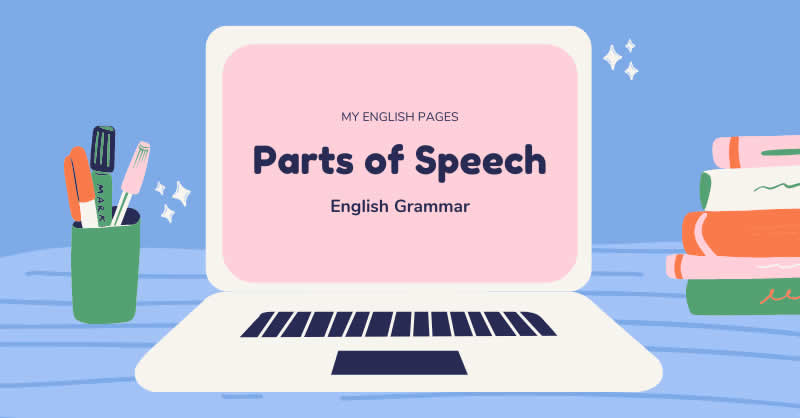
Table of Contents
Introduction.
In English grammar, the fundamental components of language essential for constructing meaningful and grammatically correct sentences are known as parts of speech. This article will delve into the eight parts of speech, providing definitions, examples, and insights into their distinct roles within sentences.
What are Parts of Speech?
Parts of Speech Defined
In grammar, parts of speech , also referred to as lexical categories, grammatical categories, or word classes, categorize words based on their linguistic functions. These parts play a crucial role in sentence construction by conveying specific meanings and relationships between words.
In English, there are eight parts of speech:
- Adjectives.
- Interjection.
- Conjunction.
Prepositions
Let’s explore these parts of speech in more detail!
A List of 8 Parts of Speech
Definition: Verbs express actions or states of being within a sentence.
- She goes to school every day.
- He writes a diary entry every night.
- The unicorn exists only in myths.
- They are happy together.
English has various types of verbs:
A. Action Verbs : Action verbs denote physical or mental actions and are the most common type of verbs. These verbs can be conjugated in simple and continuous tenses
- She runs in the park every morning. (Simple Present
- He thought deeply about life. (Simple past)
- Look at the students are copying the lesson. (Present Continuous)
B. Stative Verbs: Stative verbs express a state of being or conditions that are not changing or likely to change. In contrast to action verbs, these verbs can’t be conjugated into continuous tenses. It is incorrect to say “The book is belonging to Jane.”
- The necklace belongs to her.
- They love each other deeply.
- He prefers tea to coffee.
C. Linking Verbs: Linking verbs connect the subject of a sentence to a subject complement, which describes or identifies the subject.
- She is a teacher.
- The plan seems perfect.
- They become friends quickly.
D. Helping (Auxiliary) Verbs: Helping verbs work in conjunction with the main verb to express nuances such as tense, mood, or voice.
- She has finished her homework.
- They will come to the party.
- He is working on a project.
E. Modal Verbs: Modal verbs express ability, possibility, necessity, or permission.
- She can swim very well.
- You must finish your assignment.
- He may join us later.
F. Transitive Verbs: Transitive verbs require a direct object to complete their meaning.
- She eats an apple.
- They built a sandcastle.
- He reads a book every night.
G. Intransitive Verbs : Intransitive verbs do not require a direct object to convey a complete meaning.
- She runs every morning.
- They laughed loudly.
- He arrived early.
READ MOR ABOUT VERBS
Definition: Nouns represent people, animals, objects, substances, states, events, ideas, and feelings. They function as subjects or objects and can be modified by adjectives.
Here are the major noun characteristics:
- Nouns identify people, places, things, or ideas in a sentence.
- Nouns can serve as subjects, objects, or indirect objects.
- Nouns can be modified by adjectives or possessive pronouns.
- Nouns can be singular or plural.
There are different types of nouns:
- Common Nouns: Refer to general, non-specific entities (e.g., dog, city).
- Proper Nouns: Refer to specific, unique entities and are capitalized (e.g., John, Paris).
- Countable Nouns: Can be counted and have both singular and plural forms (e.g., book, books).
- Uncountable Nouns: Cannot be counted individually and lack a plural form (e.g., water, knowledge).
- Concrete Nouns: Refer to tangible, physical entities (e.g., table, tree).
- Abstract Nouns: Refer to intangible concepts or qualities (e.g., love, courage).
- Collective Nouns: Denote a group or collection of individuals (e.g., team, family).
- Compound Nouns: Comprise two or more words to express a single concept (e.g., toothpaste, basketball).
Example sentences with nouns:
- John is my neighbor.
- lion: The lion roared loudly.
- table: The table is made of oak.
- freedom: Freedom is a precious gift.
- love: Love conquers all.
READ MOR ABOUT NOUNS
Definition: Adjectives describe or specify nouns or pronouns. Examples of adjectives include good, beautiful, nice, my, etc.
- It’s a good day.
- She wears a beautiful dress.
- He has a nice car.
- This is my house.
READ MORE ABOUT ADJECTIVES
Definition: Adverbs modify verbs, adjectives, or other adverbs. Adverbs often end in -ly as in nicely, beautifully, slowly, etc (formed by adding -ly to an adjective). But that’s not always the case.
There are various types of adverbs in English:
- Adverbs of Time: Indicate when an action occurs. ( Today, now, later, etc. )
- Adverbs of Place: Specify the location of an action. ( Here, there, everywhere, etc. )
- Adverbs of Manner: Describe how an action is performed. ( Quickly, softly, well, etc. )
- Adverbs of Frequency: Express how often an action occurs. ( Always, rarely, sometimes, etc. )
- Adverbs of Degree: Modify the intensity or degree of an adjective or adverb. ( Very, too, quite, etc. )
- Adverbs of Certainty: Indicate the level of certainty about an action. ( Surely, certainly, maybe, etc. )
- Adverbs of Purpose: Describe why an action is performed. ( In case, so that, in order to, etc.)
Example sentences with adverbs:
- She is completely unaware.
- I never expected this.
- The book is there on the shelf.
- She speaks slowly .
READ MORE ABOUT ADVERBS
Definition: Pronouns replace nouns or phrases.
Pronouns can be categorized based on their functions:
- Example: She, they, it
- Example: His, hers, theirs
- Example: Himself, herself, themselves
- Example: Who, which, that
- Example: This, these, those
Example sentences with pronouns:
- I love chocolate.
- This is for you.
- He is coming tomorrow.
- She likes ice cream.
- It is on the table.
READ MORE ABOUT PRONOUNS
Definition: Prepositions indicate the relationship between nouns and other words in a sentence. A preposition is positioned before a noun or pronoun, creating a phrase that modifies another word within the sentence.
Consequently, a preposition is an integral component of a prepositional phrase, typically functioning either as an adjective or an adverb.
Below is a compilation of the most frequently used prepositions:
- in, on, under
- with, without, beside
- for, during, after
- between, among, beyond
Example sentences with prepositions:
- The cat is in the basket.
- The plane is above the clouds.
- She went to the market.
- This gift is for you.
READ MORE ABOUT PREPOSITIONS
Conjunctions
Definition: Conjunctions connect clauses, sentences, or words.
There are three types of conjunctions in English:
Coordinating Conjunctions:
- Examples: and, but, or
- Sentence: She likes tea and coffee.
Correlative Conjunctions:
- Examples: not only…but also, either…or
- Sentence: He is not only smart but also diligent.
Subordinating Conjunctions:
- Examples: although, because, since
- Sentence: Although it’s raining, we will go out.
More example sentences:
- She is rich and successful.
- He is intelligent, but he is shy.
- Although it’s raining, we will go out.
- They won because they worked hard.
READ MORE ABOUT CONJUNCTIONS
Interjections
Definition: Interjections express surprise or emotion. Examples of interjections include oh, wow, alas, yippee, etc.
- oh!: Oh! That was unexpected.
- Good Lord: Good Lord, what a mess!
READ MORE ABOUT INTERJECTIONS
Analyzing Sentence Structure (Parts of Speech)
In the following examples, we will analyze the structure of sentences to identify the different parts of speech used.
Sample Sentences:
- My (adjective) friend (noun) speaks (verb) English (noun) fluently (adverb).
- Oh! (interjection) I (pronoun) went (verb) to (preposition) school (noun) and (conjunction) I (pronoun) met (verb) Fred (noun).
In conclusion, parts of speech serve as crucial categories that describe the distinct roles words play within a sentence. A comprehensive grasp of these categories empowers you to discern how words function, fostering a deeper understanding of language nuances.
How many parts of speech are used in English?
In English, there are traditionally eight parts of speech.
Are there 9 parts of speech?
No, there are traditionally eight parts of speech in English.
Are articles and determiners parts of speech?
Yes, articles and determiners are considered parts of speech. They fall under the category of adjectives.
How do you identify parts of speech in a sentence?
To identify parts of speech in a sentence, analyze the function of each word. Determine whether it expresses an action (verb), describes a noun (adjective), modifies a verb, adjective, or adverb (adverb), replaces a noun (pronoun), connects words or groups of words (conjunction), shows a relationship (preposition), or expresses strong emotion (interjection).
- Page Content
- Sidebar Content
- Main Navigation
- Quick links
- All TIP Sheets
The Eight Parts of Speech
- Prepositions
- Conjunctions
- Interjections
- Basic Sentence Structure
- Sentence Fragments
- Run-on Sentences and Comma Splices
- Sentence Type and Purpose
- Independent and Dependent Clauses: Coordination and Subordination
- Subject Verb Agreement
- Consistent Verb Tense
- Other Phrases: Verbal, Appositive, Absolute
- Pronoun Reference
- Relative Pronouns: Restrictive and Nonrestrictive Clauses
- Avoiding Modifier Problems
- Transitions
- Would, Should, Could
- Achieving Parallelism
- Definite and Indefinite Articles
- Two-Word Verbs
TIP Sheet THE EIGHT PARTS OF SPEECH
There are eight parts of speech in the English language: noun, pronoun, verb, adjective, adverb, preposition, conjunction, and interjection. The part of speech indicates how the word functions in meaning as well as grammatically within the sentence. An individual word can function as more than one part of speech when used in different circumstances. Understanding parts of speech is essential for determining the correct definition of a word when using the dictionary.
1. NOUN
- A noun is the name of a person, place, thing, or idea.
man... Butte College... house... happiness
A noun is a word for a person, place, thing, or idea. Nouns are often used with an article ( the , a , an ), but not always. Proper nouns always start with a capital letter; common nouns do not. Nouns can be singular or plural, concrete or abstract. Nouns show possession by adding 's . Nouns can function in different roles within a sentence; for example, a noun can be a subject, direct object, indirect object, subject complement, or object of a preposition.
The young girl brought me a very long letter from the teacher , and then she quickly disappeared. Oh my!
See the TIP Sheet on "Nouns" for further information.
2. PRONOUN
- A pronoun is a word used in place of a noun.
She... we... they... it
A pronoun is a word used in place of a noun. A pronoun is usually substituted for a specific noun, which is called its antecedent. In the sentence above, the antecedent for the pronoun she is the girl. Pronouns are further defined by type: personal pronouns refer to specific persons or things; possessive pronouns indicate ownership; reflexive pronouns are used to emphasize another noun or pronoun; relative pronouns introduce a subordinate clause; and demonstrative pronouns identify, point to, or refer to nouns.
The young girl brought me a very long letter from the teacher, and then she quickly disappeared. Oh my!
See the TIP Sheet on "Pronouns" for further information.
3. VERB
- A verb expresses action or being.
jump... is... write... become
The verb in a sentence expresses action or being. There is a main verb and sometimes one or more helping verbs. (" She can sing." Sing is the main verb; can is the helping verb.) A verb must agree with its subject in number (both are singular or both are plural). Verbs also take different forms to express tense.
The young girl brought me a very long letter from the teacher, and then she quickly disappeared . Oh my!
See the TIP Sheet on "Verbs" for more information.
4. ADJECTIVE
- An adjective modifies or describes a noun or pronoun.
pretty... old... blue... smart
An adjective is a word used to modify or describe a noun or a pronoun. It usually answers the question of which one, what kind, or how many. (Articles [a, an, the] are usually classified as adjectives.)
See the TIP Sheet on "Adjectives" for more information.
5. ADVERB
- An adverb modifies or describes a verb, an adjective, or another adverb.
gently... extremely... carefully... well
An adverb describes or modifies a verb, an adjective, or another adverb, but never a noun. It usually answers the questions of when, where, how, why, under what conditions, or to what degree. Adverbs often end in -ly.
See the TIP Sheet on "Adverbs" for more information.
6. PREPOSITION
- A preposition is a word placed before a noun or pronoun to form a phrase modifying another word in the sentence.
by... with.... about... until
(by the tree, with our friends, about the book, until tomorrow)
A preposition is a word placed before a noun or pronoun to form a phrase modifying another word in the sentence. Therefore a preposition is always part of a prepositional phrase. The prepositional phrase almost always functions as an adjective or as an adverb. The following list includes the most common prepositions:
See the TIP Sheet on "Prepositions" for more information.
7. CONJUNCTION
- A conjunction joins words, phrases, or clauses.
and... but... or... while... because
A conjunction joins words, phrases, or clauses, and indicates the relationship between the elements joined. Coordinating conjunctions connect grammatically equal elements: and, but, or, nor, for, so, yet. Subordinating conjunctions connect clauses that are not equal: because, although, while, since, etc. There are other types of conjunctions as well.
The young girl brought me a very long letter from the teacher, and then she quickly disappeared. Oh my!
See the TIP Sheet on "Conjunctions" for more information.
8. INTERJECTION
- An interjection is a word used to express emotion.
Oh!... Wow!... Oops!
An interjection is a word used to express emotion. It is often followed by an exclamation point.
The young girl brought me a very long letter from the teacher, and then she quickly disappeared. Oh my !
See the TIP Sheet on "Interjections" for more information.
Home | Calendars | Library | Bookstore | Directory | Apply Now | Search for Classes | Register | Online Classes | MyBC Portal MyBC -->
Butte College | 3536 Butte Campus Drive, Oroville CA 95965 | General Information (530) 895-2511

- English Grammar
- Names in English
- Application Writing
Parts of Speech: Definition and Types with Examples
In English grammar, the parts of speech are the categories to which words are assigned based on their function in a sentence. There are eight parts of speech in the English language: nouns, pronouns, verbs, adjectives, adverbs, prepositions, conjunctions, and interjections. Each part of speech has a specific role in a sentence and serves a specific purpose.
Understanding the different parts of speech and their functions can help you analyze and construct sentences, and improve your communication skills.
Eight Parts of Speech in English Grammar
There are eight parts of speech in the English language:
A noun is a word that is used to name a person, place, thing, or idea. It helps us identify and talk about the people, objects, and concepts in our world. Nouns can be proper nouns (e.g. John, New York) or common nouns (e.g. boy, city).
Let’s break it down further:
- Person: Nouns can be used to talk about people. For example, names like “John” or “Sarah” are nouns because they represent specific individuals. The word “teacher” is also a noun because it refers to a person who teaches.
- Place: Nouns can also represent locations or specific places. For instance, “Paris” or “school” are nouns because they name particular places. They help us understand where things are happening.
- Thing: Nouns can refer to objects or things. For example, “table,” “book,” or “car” are all nouns because they represent physical items that we can see and touch.
- Idea: Nouns can even represent abstract concepts or ideas. Words like “love,” “freedom,” or “knowledge” are nouns because they represent things that exist in our minds but cannot be seen or touched.
Examples in Sentences:
- Ronaldo is a good player.
- Kate has a lovely doll .
- Dubai is a beautiful city .
>> Read more about nouns
A pronoun is a word that we use to replace a noun. Instead of repeating the noun over and over again, we can use a pronoun to refer to it. Pronouns can be personal pronouns (e.g. I, you, he, she, it), possessive pronouns (e.g. mine, yours, his, hers), or reflexive pronouns (e.g. myself, yourself, himself, herself).
Let’s say, you have a friend named Emily. When you talk about Emily, you can use her name, saying things like “Emily is kind” or “Emily is smart.” But instead of saying “Emily” every time, you can use a pronoun like “she” to refer to her. So you could say “She is kind” or “She is smart.”
- This is my father. He is a teacher.
- My mother is kind. Everybody likes her .
- I made this cake myself .
Using pronouns makes our language smoother and easier to understand. They help us refer to people, objects, or things without repeating their names all the time.
>> Read more about Pronouns
A verb is a word that shows an action or a state of being. It describes what someone or something does or how they exist. Verbs bring action and movement to our sentences.
- Action: Verbs can represent actions that people or things do. For example, words like “run,” “jump,” “eat,” or “write” are verbs because they describe specific actions that someone or something is performing. So when you say, “I run,” or “The dog jumps,” the verbs “run” and “jumps” show the action taking place.
- State of being: Verbs can also express a state of being or existence. For instance, words like “is,” “am,” “are,” or “was” are verbs because they describe how someone or something exists or what they are like. When you say, “I am happy,” or “They were excited,” the verbs “am” and “were” express a state of being or existence.
Verbs are crucial for constructing meaningful sentences because they allow us to describe actions, events, and conditions. They help us convey what is happening, what has happened, or how things are. Without verbs, our sentences would lack the action and dynamism needed to communicate effectively.
Remember, verbs make sentences come alive by showing what is happening or how things are. They are like the engines that power our language!
- Cows eat grass.
- Mary enjoys singing.
- Most children learn very fast
- He became a doctor.
>>Read more about Verbs
An adjective is a word that describes or gives more information about a noun. It helps to paint a clearer picture in our minds by adding details and qualities to the things we talk about.
Here’s a simple explanation:
Imagine you have a fluffy cat. The word “fluffy” is an adjective because it describes how the cat looks. It helps you imagine the cat’s soft and thick fur. Similarly, if you say you have a big house, “big” is the adjective that tells us about the size of the house.
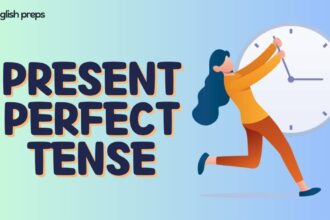
Present Perfect Tense? – Rules and Examples
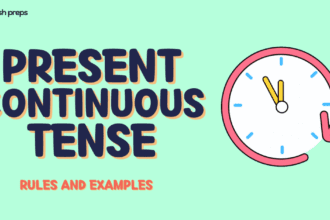

Present Continuous Tense: Rules and Example
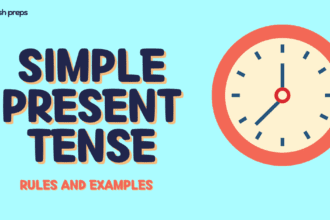
Present Indefinite Tense: Rules and Example
Adjectives can describe many different qualities, such as size, color, shape, texture, taste, and more. They help us express our thoughts and create a more vivid and specific image of the things we are talking about.
Here are a few more examples:
- A delicious meal: “Delicious” describes how the meal tastes.
- A beautiful flower: “Beautiful” tells us about the appearance of the flower.
- A tall tree: “tall” describes the height of the tree.
By using adjectives, we can add more detail and make our language more interesting and descriptive. They help us express our opinions, observations, and preferences by giving more information about the nouns they describe.
An adverb is a word that describes or gives more information about a verb, an adjective, or another adverb. It tells us how, when, where, or to what extent something happens. Adverbs help us understand the way actions are performed or qualities are expressed.
- Describing verbs: Adverbs can describe how an action is performed. For example, if someone runs quickly, “quickly” is the adverb because it tells us the manner or speed of the action. Adverbs can answer questions like “How?” or “In what way?”
- Describing adjectives: Adverbs can also describe or modify adjectives, providing more information about the qualities they represent. For instance, if you say someone is extremely intelligent, “extremely” is the adverb because it shows the degree or intensity of the adjective “intelligent.” Adverbs can answer questions like “To what extent?”
- Describing other adverbs: Adverbs can even describe or modify other adverbs, adding further detail or intensity to their meaning. For example, if you say someone speaks very loudly, “very” is the adverb that describes the intensity of the adverb “loudly.”
Adverbs can tell us more about the time, place, manner, frequency, degree, or reason behind an action or quality. They help us provide a fuller description of what is happening or how something is done.
- She sings beautifully. “Beautifully” describes how she sings.
- They arrived late. “Late” describes the time of their arrival.
- He writes quite slowly. “Slowly” describes the manner in which he writes.
By using adverbs, we can add more information, clarify details, and give a better understanding of actions, qualities, or circumstances. They help us communicate more precisely and vividly.
Preposition
A preposition is a word that shows the relationship between a noun (or pronoun) and another word in a sentence. It helps us understand where something is in relation to something else or how things are connected.
- Location: Prepositions can describe where something is located. For example, words like “in,” “on,” “at,” or “under” show the position of an object. If you say, “The book is on the table,” the preposition “on” tells us the relationship between the book and the table.
- Direction: Prepositions can indicate the direction of movement. Words like “to,” “from,” or “towards” show where someone or something is going. For instance, if you say, “She walked to the park,” the preposition “to” indicates the direction of her movement.
- Time: Prepositions can also express time-related relationships. Words like “before,” “after,” “during,” or “at” show when something happens. For example, if you say, “We’ll meet at 5 o’clock,” the preposition “at” indicates the specific time of the meeting.
Prepositions help us understand the spatial, temporal, or directional connections between different parts of a sentence. They provide crucial information about the location, movement, or time frame of people, objects, or events.
Here are a few examples:
- She sat beside her friend. “Beside” shows the position of her sitting.
- The cat jumped off the table. “Off” shows the direction of the cat’s movement.
- We’ll have dinner after the movie. “After” indicates the time relationship between the movie and dinner.
By using prepositions, we can provide context and clarify the relationships between different elements in a sentence. They help us paint a more complete picture and make our language more precise and meaningful.
More Example Sentences:
- He is going to New York.
- There is an old castle on the hill.
- There are seven days in a week.
Conjunction
A conjunction is a part of speech used to connect words, phrases, or clauses in a sentence. It helps to establish relationships between different elements, making the sentence more coherent and creating logical connections between ideas. Conjunctions play a crucial role in forming complex sentences by joining various components together. They can connect similar ideas (coordinating conjunctions) or show relationships between dependent and independent clauses (subordinating conjunctions).
Here are two main types of conjunctions:
- and : I like apples and oranges.
- but : She studied hard, but she still failed the exam.
- or : Would you like tea or coffee?
- nor : He didn’t eat breakfast, nor did he have lunch.
- yet : It was raining, yet they decided to go for a walk.
- so : She practiced every day, so she improved her skills.
- for : He worked hard, for he wanted to succeed.
- because : She stayed home because it was raining.
- when : I will call you when I arrive.
- if : He will come if he has time.
- although : Although it was late, they continued the party.
- while : She read a book while waiting for the bus.
Conjunctions are essential for constructing well-structured sentences and paragraphs. They allow us to convey complex relationships between ideas and enable smooth and logical transitions between different parts of a sentence.
Interjection
An interjection is a word or phrase that expresses a sudden or strong emotion or reaction. It is like a burst of feeling that we use to convey our immediate thoughts or sentiments. Interjections add color, emphasis, or an emotional touch to our language.
- Expressing emotions: Interjections capture our emotions and reactions in a concise way. They can convey excitement, surprise, joy, pain, frustration, or any other intense feeling. For example, words like “Wow!”, “Ouch!”, “Yay!”, “Oops!”, or “Oh no!” are interjections because they express our immediate responses.
- Stand-alone words or phrases: Interjections are often used as stand-alone words or phrases, independent of the rest of the sentence. They can be inserted before, after, or even within a sentence to convey the emotion we are experiencing. For instance, if you say, “Yikes! That was close,” the interjection “Yikes!” adds a sense of surprise or fear to the statement.
- Punctuation and tone: Interjections are typically punctuated with an exclamation mark to emphasize the strong emotion being expressed. They can also be influenced by the tone of our voice, such as when we raise our voice to convey excitement or lower it to show disappointment.
Interjections bring life and immediacy to our language. They allow us to express our unfiltered reactions or feelings in a vivid and engaging way.
- Yippee! I won the game! “Yippee!” expresses excitement and joy.
- Ouch! That hurt! “Ouch!” conveys pain or discomfort.
- Oh well, I guess it’s not meant to be. “Oh well” shows resignation or acceptance.
By using interjections, we can add emotion, energy, and personal expression to our words. They help us communicate our feelings and connect with others on an emotional level.
We briefly discussed the parts of speech with examples. Each part of speech has different types, and we will explain each in detail. Here’s an example sentence using all eight parts of speech.
Example Sentence using all Eight Parts of Speech
I (pronoun) quickly (adverb) ran (verb) to (preposition) the store (noun) and (conjunction) bought (verb) a big (adjective), expensive (adjective) bag of chips (noun). Wow (interjection), that was a lot of money (noun)!

When a word functions as different parts of speech?
Sometimes, a word can function as different parts of speech depending on its usage and context within a sentence. This versatility arises because words can have multiple meanings and can be applied in various ways. Here are a few examples to illustrate how a word can be different parts of speech:
Example word: “Run”
- Noun: “He went for a run in the park.” Here, “run” functions as a noun, representing an activity or exercise.
- Verb: “She likes to run every morning.” In this sentence, “run” acts as a verb, describing the action of engaging in the activity.
Example word: “Fast”
- Adjective: “He is a fast runner.” In this case, “fast” functions as an adjective, describing the quality of being quick or speedy.
- Adverb: “She ran fast to catch the bus.” Here, “fast” is an adverb, modifying the verb “ran” to indicate the manner or speed of the action.
Example word: “Hard”
- Adjective: “The test was hard.” In this sentence, “hard” acts as an adjective, describing the difficulty level of the test.
- Adverb: “He worked hard to achieve his goals.” Here, “hard” functions as an adverb, describing the intensity or degree of effort exerted.
These examples demonstrate how the same word can have different roles based on its function within a sentence and the meaning it conveys in that particular context. Understanding the broader context, sentence structure , and the intended meaning is key to correctly identifying the part of speech a word is fulfilling in a given sentence.
Open and closed word classes
Open and closed word classes are categories used in linguistics to classify words based on their ability to accept new members or their resistance to new additions. Parts of Speech falls into these two categories.
Open Word Classes:
Open word classes are categories of words that have the potential to grow and accept new members over time. They are characterized by their flexibility and ability to create new words. The four main open-word classes are:
- Nouns are open-word classes because new nouns can be coined or added to the language as new concepts or objects are discovered or created. For example, “ deep state ,” “ genocidaire ,” “ easybeat ,” and “ depthness ” are relatively recent additions to the English language.
- Verbs are open word classes because new verbs can be formed or added to the language as new actions or concepts emerge. For instance, “ genocide ” and “ kinkle ” are examples of relatively recent verb formations.
- Adjectives are open word classes because new adjectives can be created or borrowed to describe new qualities or characteristics. Examples of newer adjectives include “ snitchy ,” “ plasmonic ,” and “ anticipatory .”
- Adverbs are open word classes because new adverbs can be formed or added to the language to describe new manners, degrees, or circumstances. For instance, “ folklorically ,” “ crazily ,” and “ certifiably ” are relatively recent adverb formations.
Closed Word Classes:
Closed word classes are categories of words that have a limited number of members and are resistant to the addition of new words. They have relatively stable membership and do not readily accept new members. The three main closed word classes are:
- Pronouns have a fixed set of members that represent specific categories, such as personal pronouns (e.g., “he,” “she,” “it”), possessive pronouns (e.g., “mine,” “yours”), and reflexive pronouns (e.g., “myself,” “yourself”).
- Prepositions have a fixed set of members, and new prepositions are rarely added to the language. Examples of prepositions include “in,” “on,” “at,” “under,” and “between.”
- Conjunctions have a limited set of members, and new conjunctions are not typically added to the language. Common conjunctions include “and,” “but,” “or,” and “because.”
These closed-word classes have relatively stable membership and do not readily accept new words because they serve specific grammatical or structural functions in the language.
Tips to figure out Parts of Speech
When trying to figure out parts of speech in a sentence, there are several tips you can use. Here are some common approaches:
- Understand the role of the word: Parts of speech are determined by the function of a word within a sentence. Start by understanding the role the word plays—does it describe, name, connect, or modify something? This can give you a clue about its part of speech.
- Identify word endings: Many words have specific endings that indicate their part of speech. For example, nouns often end in -tion, -ment, -ity, or -ness; verbs can end in -ing or -ed; adjectives may end in -ful or -ous. Pay attention to these patterns.
- Look for determiners: Determiners (such as articles like “the” or “a,” possessive pronouns like “my” or “your,” or demonstratives like “this” or “that”) are often indicators of nouns. If a word is preceded by a determiner, it’s likely a noun.
- Consider the context: Context can provide valuable clues about a word’s part of speech. Look at the words that surround it and the overall meaning of the sentence. For example, if the word is an action or state, it’s likely a verb; if it describes or modifies a noun, it’s likely an adjective.
- Word order : In English, word order often indicates the part of speech. For example, articles (a, an, the) usually come before nouns, while adjectives often come before nouns they modify.
- Consult a dictionary or grammar resource: When in doubt, consult a dictionary or a reliable grammar resource. They can provide definitions, examples, and the specific part of speech for a given word.
- Practice with sentence diagrams: Diagramming sentences can help you visually represent the structure and relationship between words in a sentence. This can assist in identifying the part of speech of each word.
- Learn the common patterns: Each part of speech has certain characteristics and patterns. By familiarizing yourself with these patterns, such as typical word order or common word formations, you can improve your ability to identify parts of speech.
Remember that figuring out parts of speech requires practice and a good understanding of grammar rules. Over time, you’ll become more proficient at recognizing the different parts of speech in sentences.
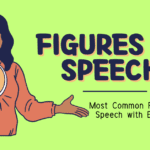
Leave a Reply Cancel reply
Your email address will not be published. Required fields are marked *
Save my name, email, and website in this browser for the next time I comment.
Subscribe Now
Subscribe to our newsletter to get our newest articles instantly!
Most Popular
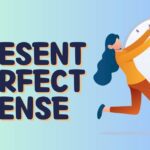
Cow Essay in English for Students
15 application for fee concession, leave application for urgent piece of work.
Sign in to your account
Username or Email Address
Remember Me
Parts of Speech


COMMENTS
Every word in English can be classified as one of eight parts of speech. The term part of speech refers to the role a… Learn to identify and use the 8 parts of speech in English: nouns, verbs, adjectives, adverbs, prepositions, pronouns, and more.
In English, there are eight parts of speech: Verbs. Nouns. Adjectives. Adverbs. Pronouns. Interjection. Conjunction. Prepositions. Let’s explore these parts of speech in more detail!
The parts of speech are adjectives, adverbs, conjunctions, determiners, interjections, nouns, prepositions, pronouns, and verbs. In a sentence, every word or phrase can be classified as one of the nine parts of speech depending …
There are eight parts of speech in the English language: nouns, pronouns, verbs, adjectives, adverbs, prepositions, conjunctions, and interjections. Each part of speech has a specific role in a sentence and …
The 8 Parts Of Speech In English. There are eight major parts of speech. Nouns name persons, places, things, ideas, or qualities, e.g., Franklin, boy, Yangtze River, shoreline, …
The eight parts of speech in English grammar are like ingredients in a recipe—each plays a role in creating a well-composed... February 8, 2024. What Part of Speech Is the Word “The”? The is the most commonly used …